"Endurance", or the story of the survival of 28 people among the Antarctic ice in 1914-1916
Categories: History
By Pictolic https://pictolic.com/article/endurance-or-the-story-of-the-survival-of-28-people-among-the-antarctic-ice-in-1914-1916.htmlIn 1914, 28 people were trapped among the Antarctic ice. The photographer managed to capture the months-long struggle of people for survival.
Ernest Shackleton was already widely known as a fearless explorer who reached a record southern latitude during his Antarctic expedition in 1907-1909, when in 1914 he set sail on the expedition vessel Endurance ("Endurance", "Endurance").
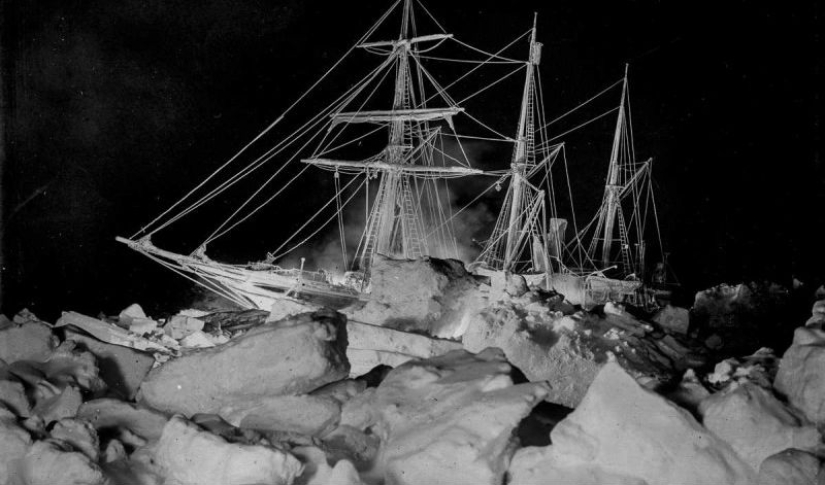 Source: deadbees.net
Source: deadbees.net

1. Ernest Shackleton, head of the Imperial Trans-Antarctic Expedition.
The South Pole had been reached a few years earlier by Roald Amundsen, so Shackleton set himself a more ambitious goal: landing on Antarctica and traveling 1,800 miles across the continent through the South Pole. He called his undertaking the Imperial Trans-Antarctic Expedition.
With the support of a ship going to the far side of the ice continent to lay supplies, Shackleton, with a specially selected crew of 28 people, sailed from Buenos Aires to the island of South Georgia and the Weddell Sea, known as the "Ice Bag".
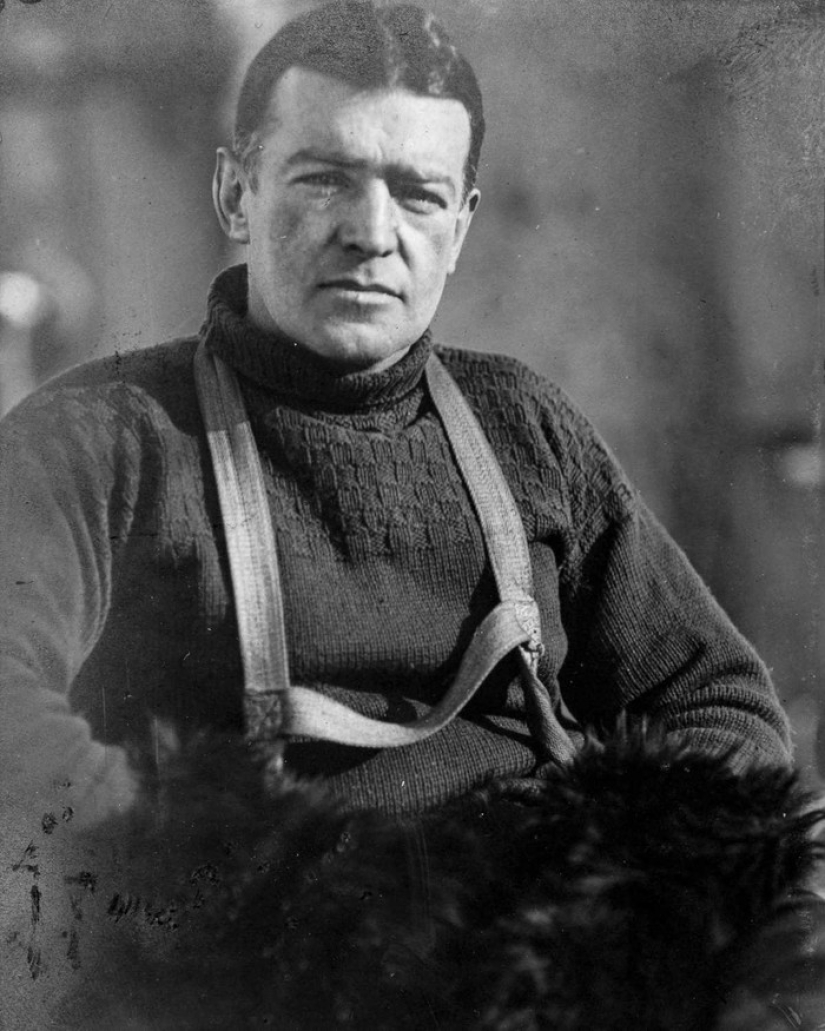
2. Photographer Frank Hurley.

3. The third mate regulates the signal flags of the Endurance.
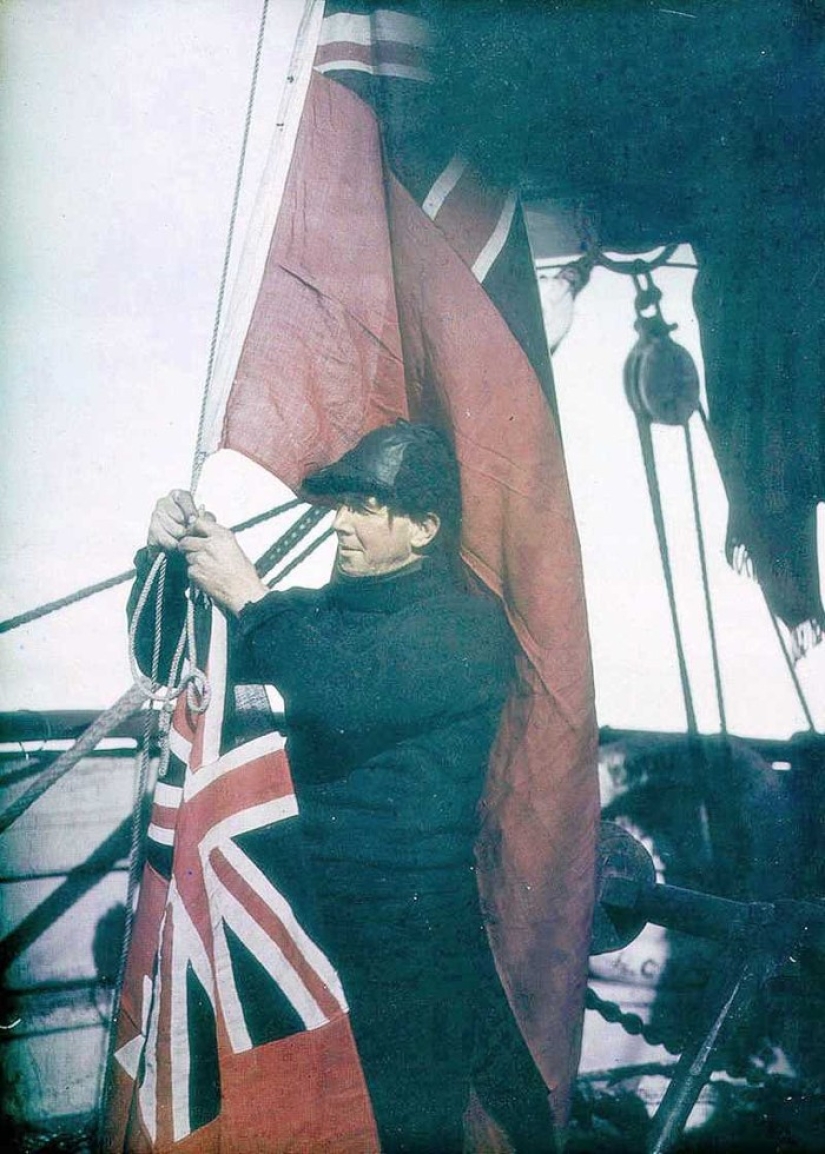
4. The wake of the Endurance during the passage through the Weddell Ice Sea.
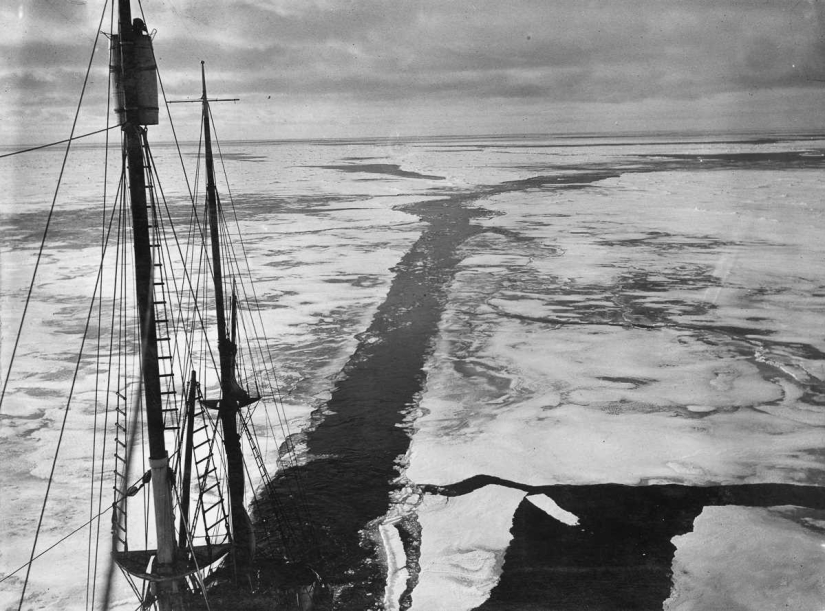
5. The crew is trying to clear a path in the ice for the Endurance.
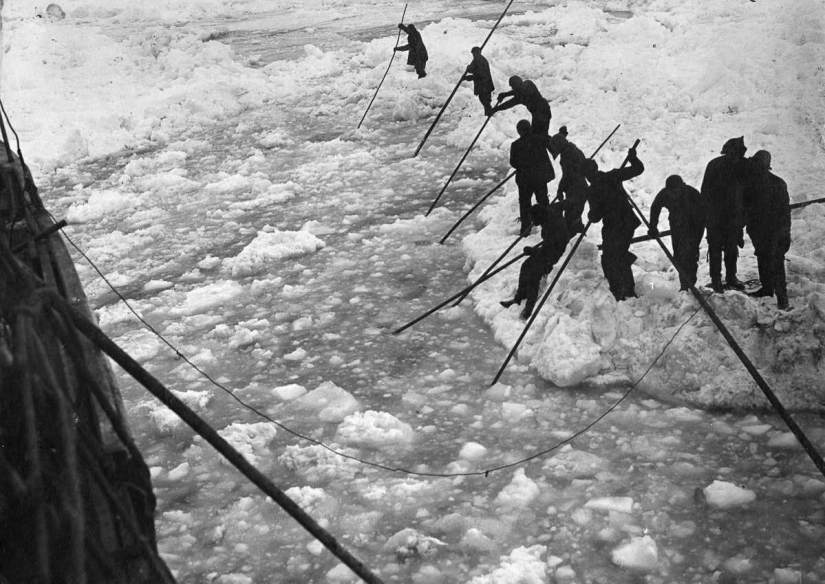
6.

7. Soon the ship encountered an unexpectedly high density of ice floes. After more than two months of struggle, Endurance was hopelessly shackled by ice.
Changes were made to the grandiose plan of the expedition: the new goal was to prepare for the winter among the hummocks. Sled dogs were moved from the ship to the ice, and the ship was turned into a wintering camp. To maintain morale, the crew carried out mandatory ski trips and staged amateur performances indoors.
Frank Hurley, the expedition's photographer, entertained himself with walks around the ship, shooting dramatic compositions from the blocked vessel and ice formations. In a dark room, next to the ship's engine, he expertly processed his glass negatives in almost frozen chemicals, which caused the skin of his fingertips to suffer incredibly.
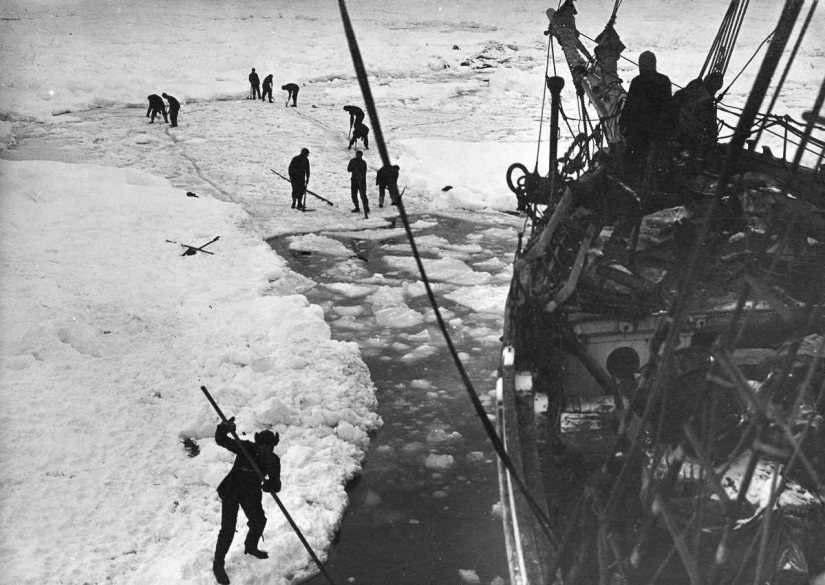
8. The sun over the "Endurance" after the darkness of winter.

9.
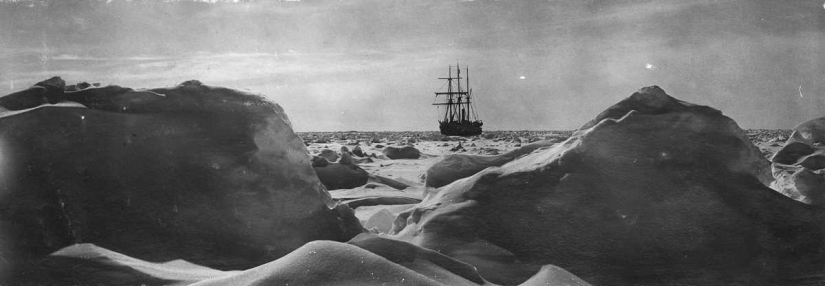
10. Boatswain John Vincent repairs the net on the Endurance.
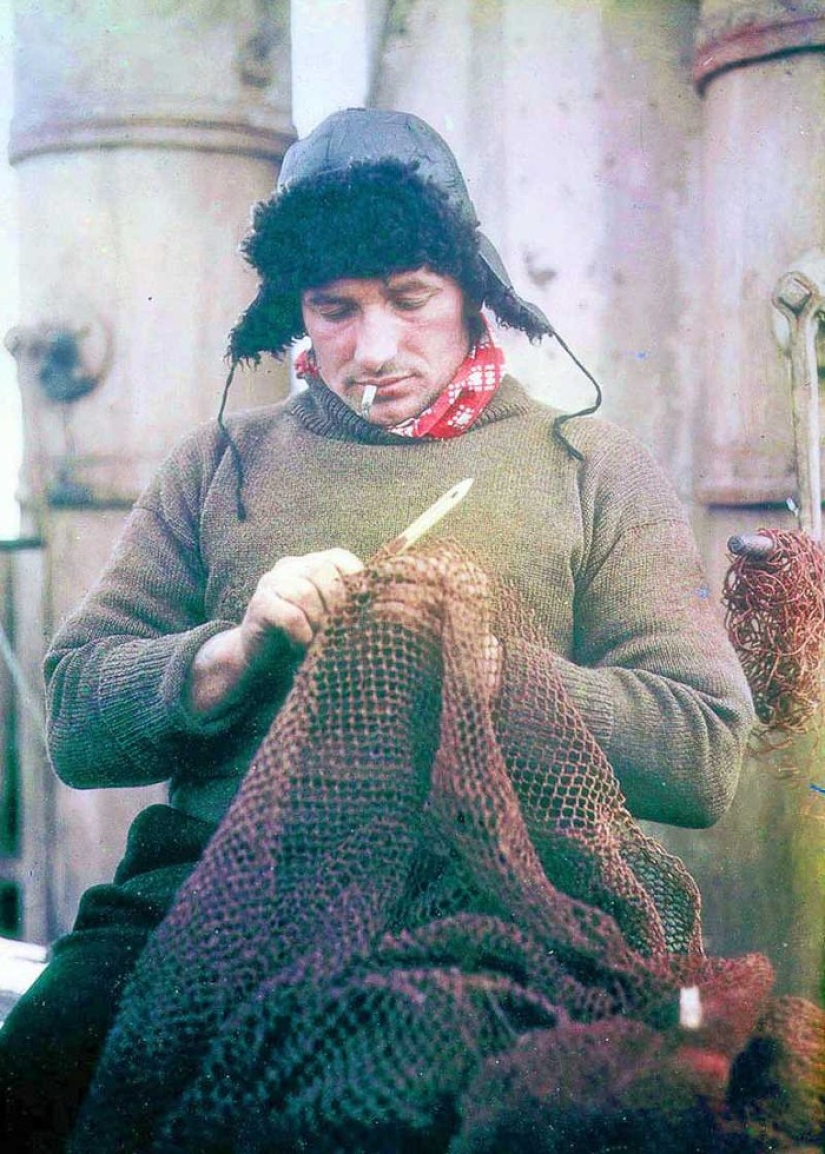
11. "Endurance", bound by ice.
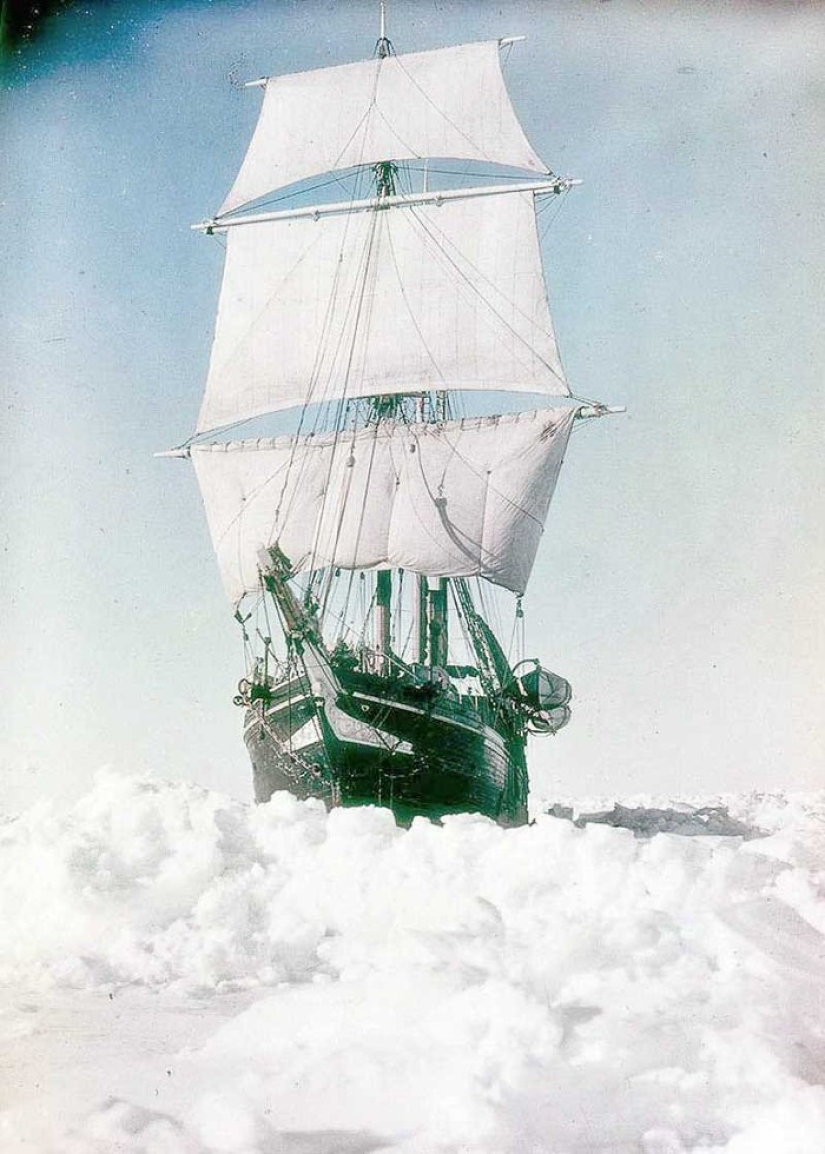
12. The crew moves the dogs to the ice.
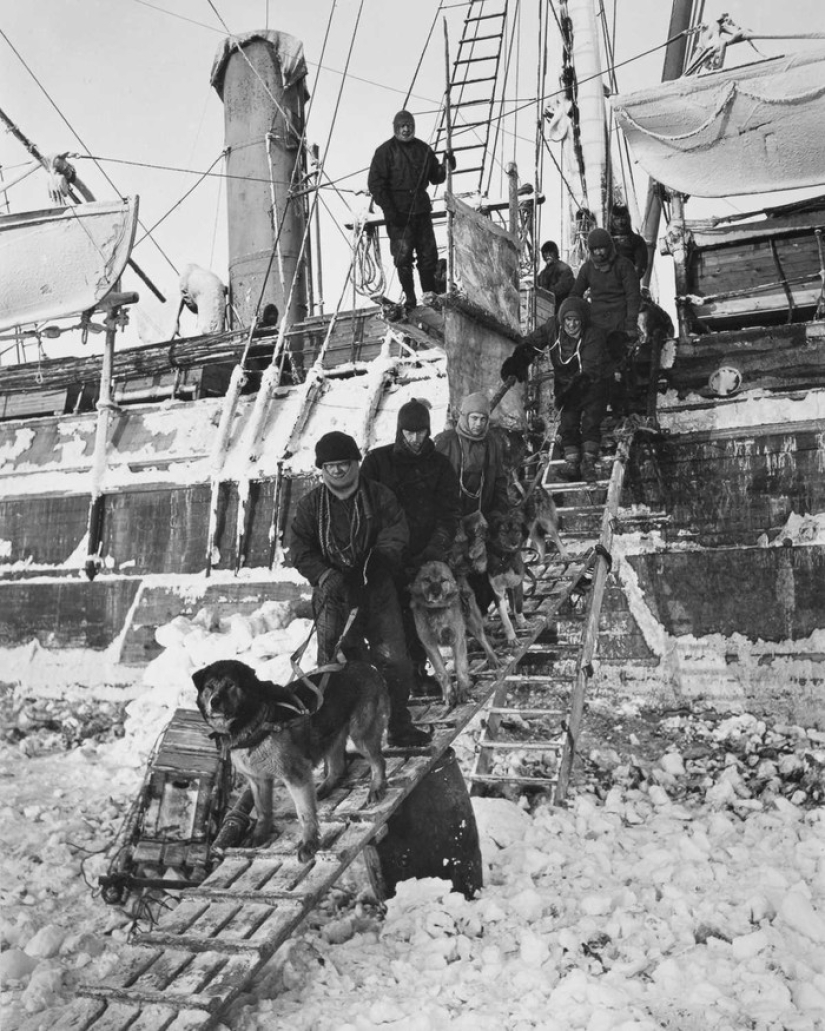
13. Physicist James Reginald near his observatory.
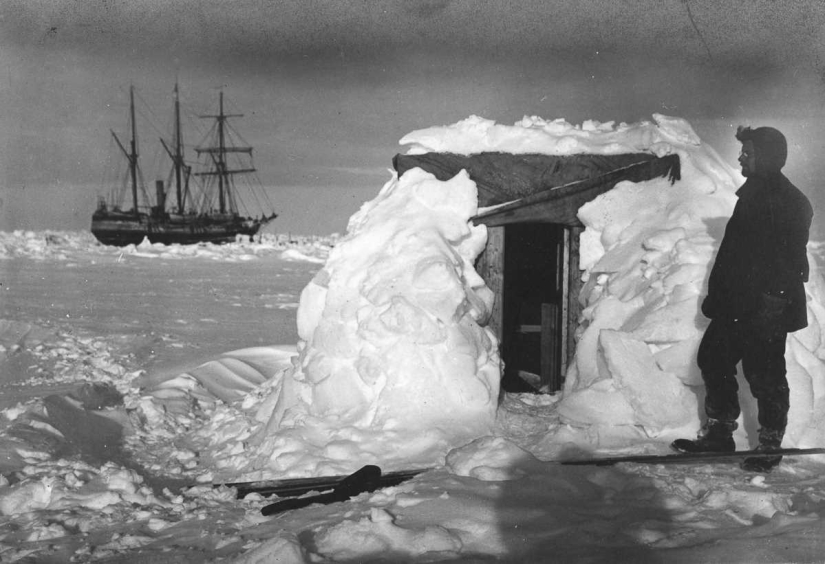
14. Photographer Frank Hurley climbed the mast.
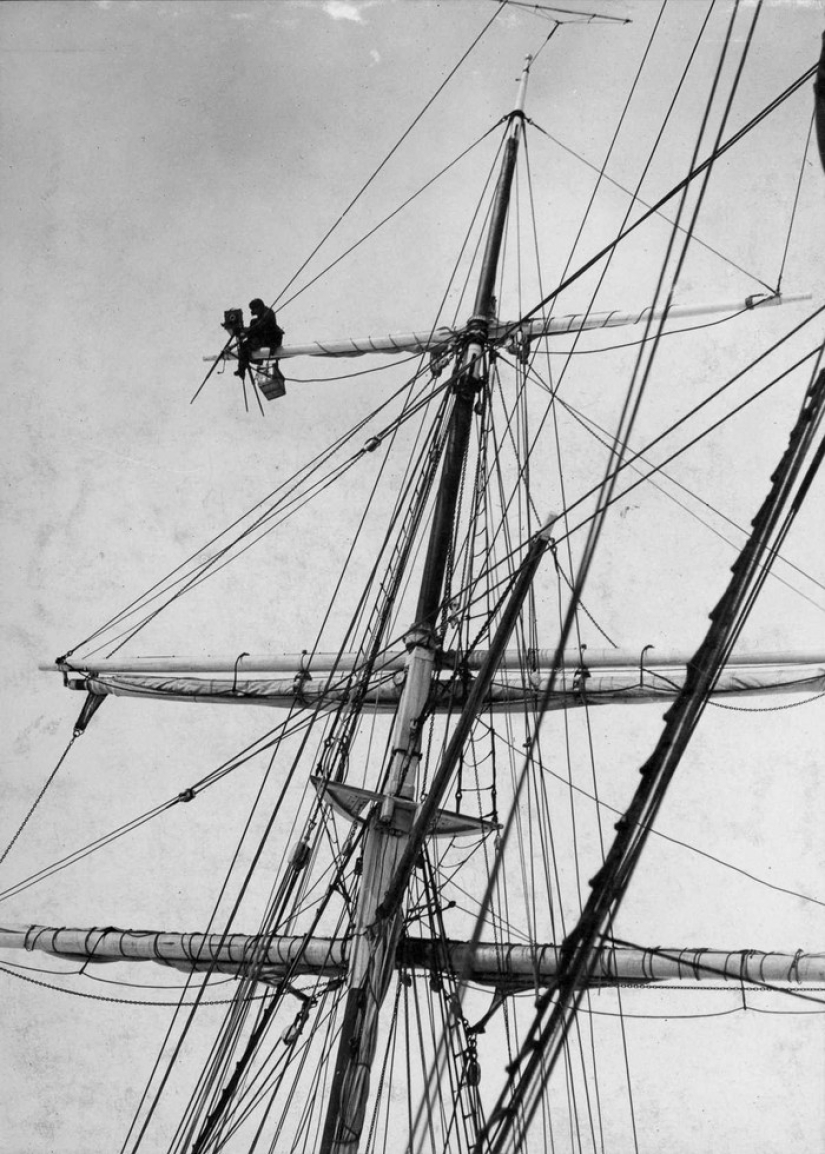
15. Frank Worsley, captain of the Endurance.
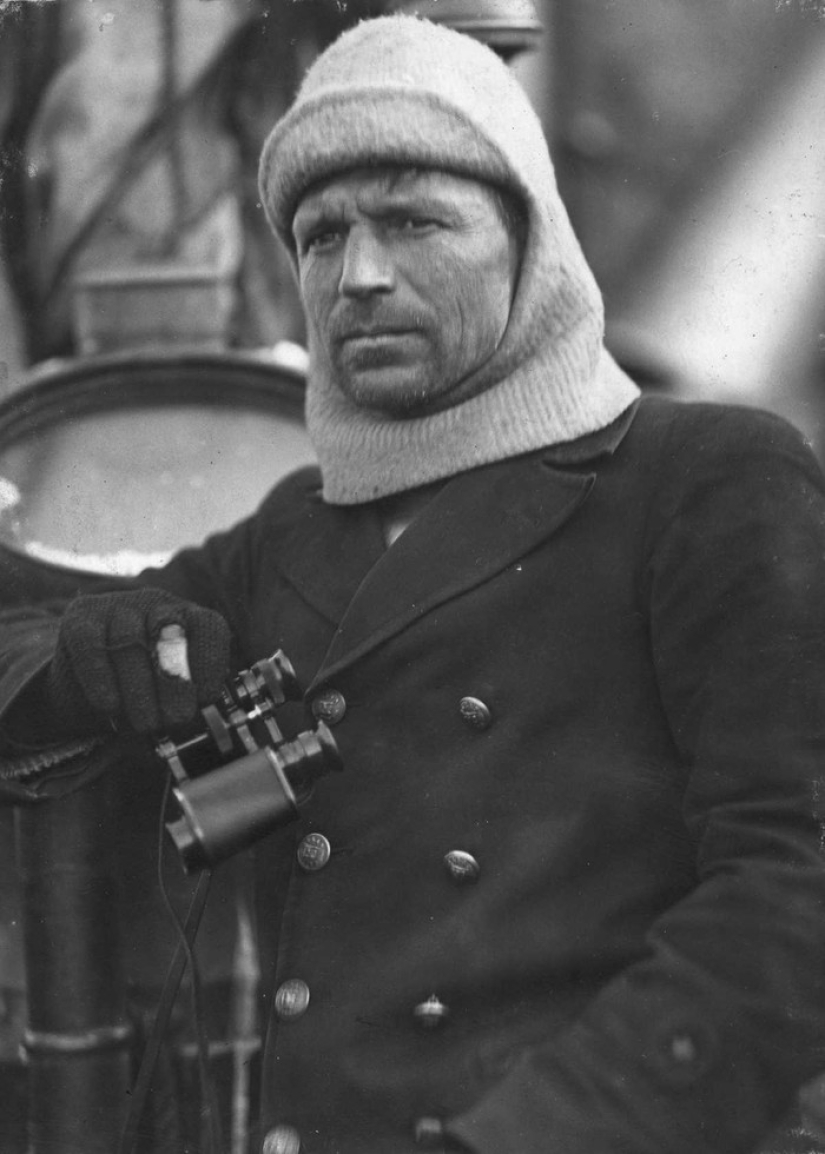
16. Navigator Hubert Hudson with imperial penguin chicks.
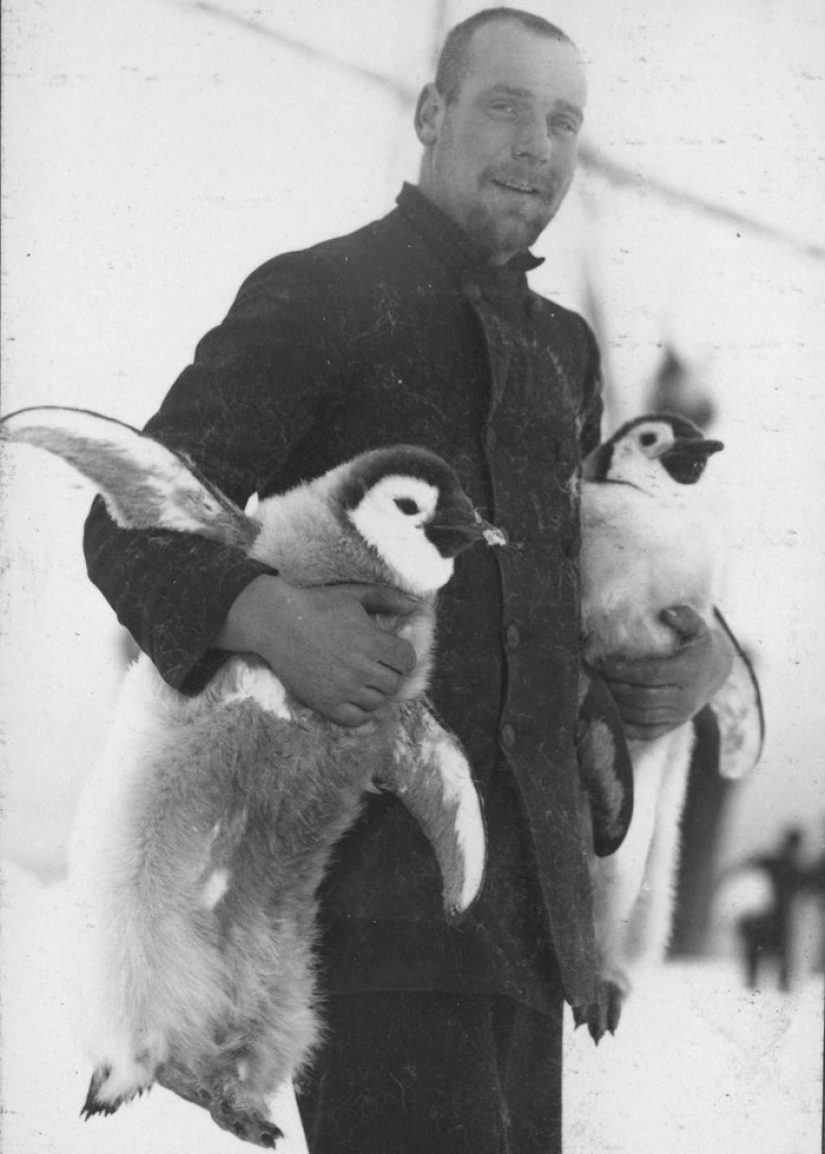
17. Second Mate Tom Crean with sled dog puppies.

18. Cook Charles Green skinns a penguin for dinner.

19. Frank Wild, deputy head of the expedition.

20. Lionel Greenstreet, first mate.
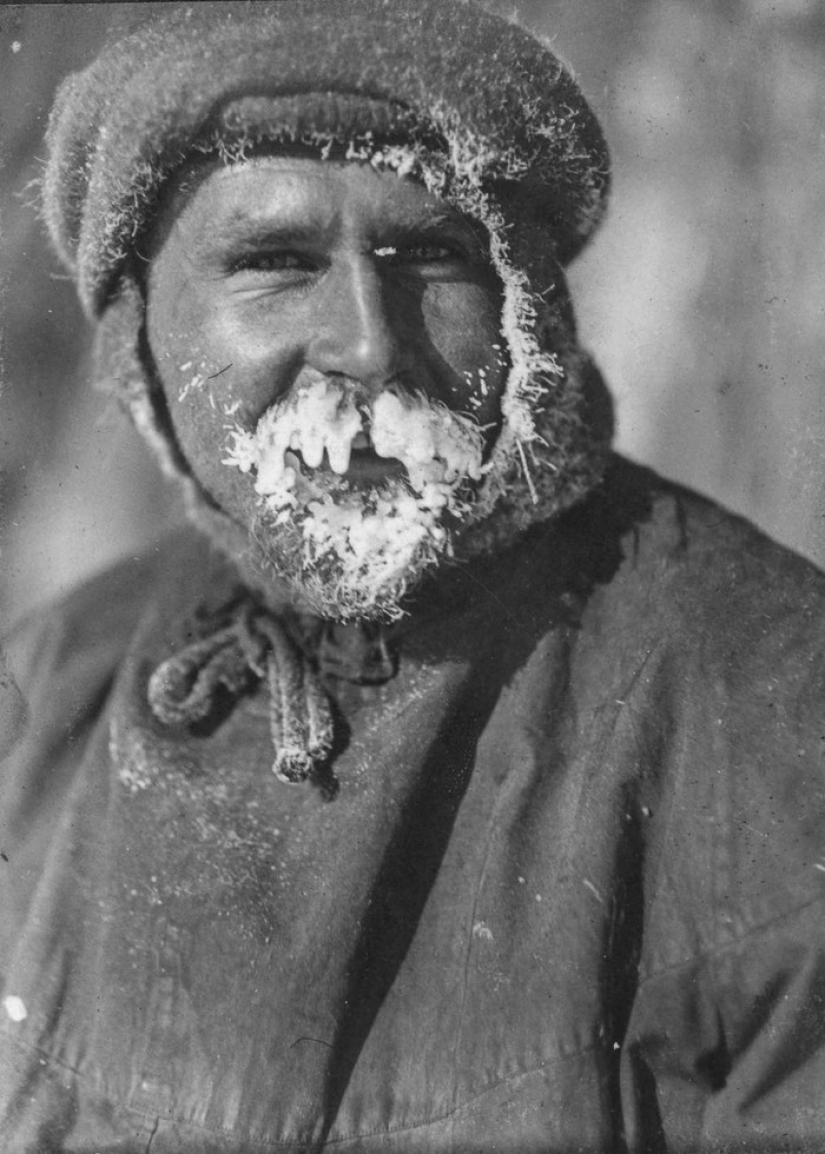
21. Evening entertainment at the Ritz on board the Endurance.
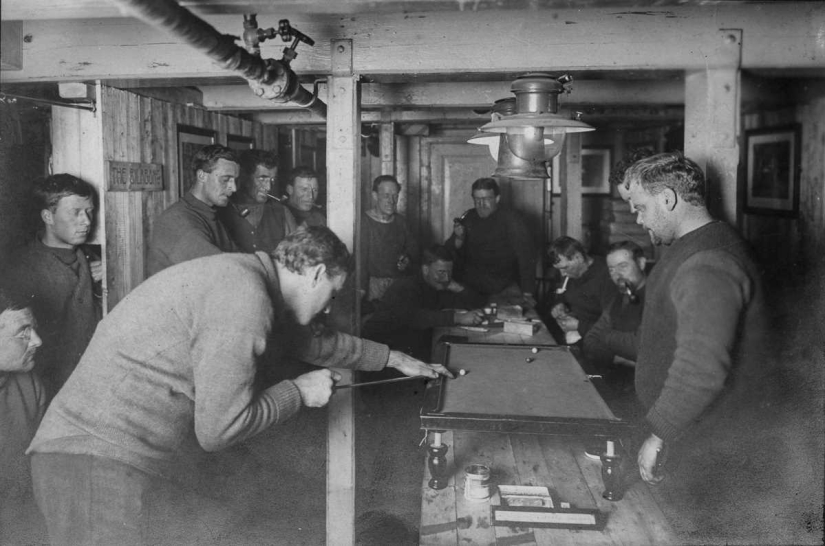
22. Haircut tournament on board the Endurance.
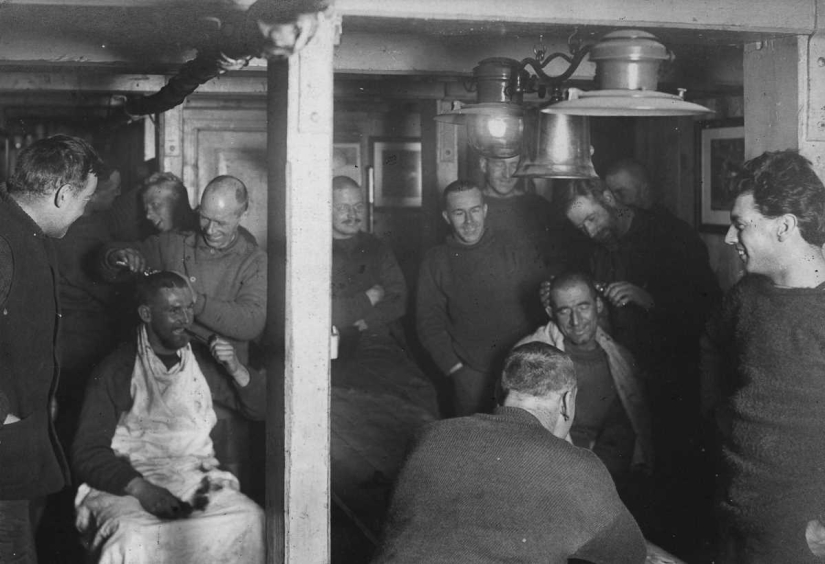
23. Equipment "Endurance", covered with ice.
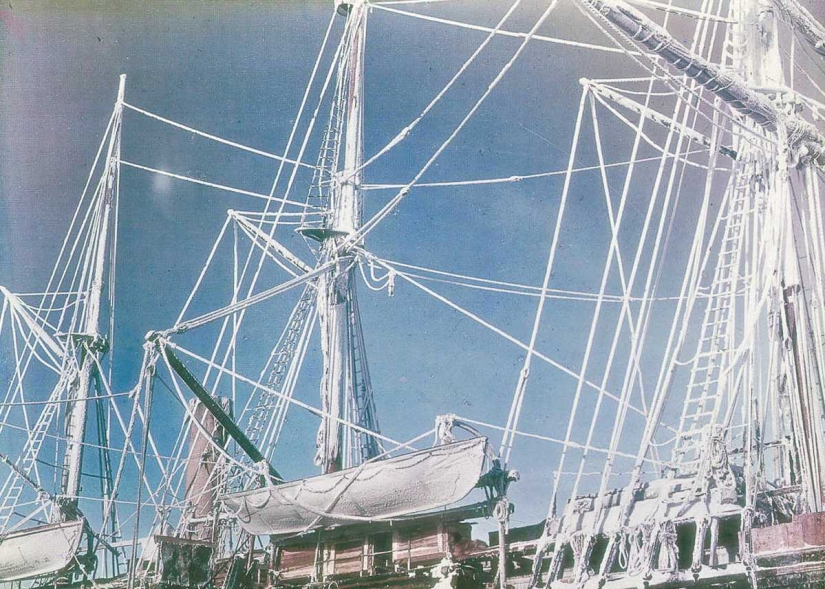
24. "Endurance" at dawn.
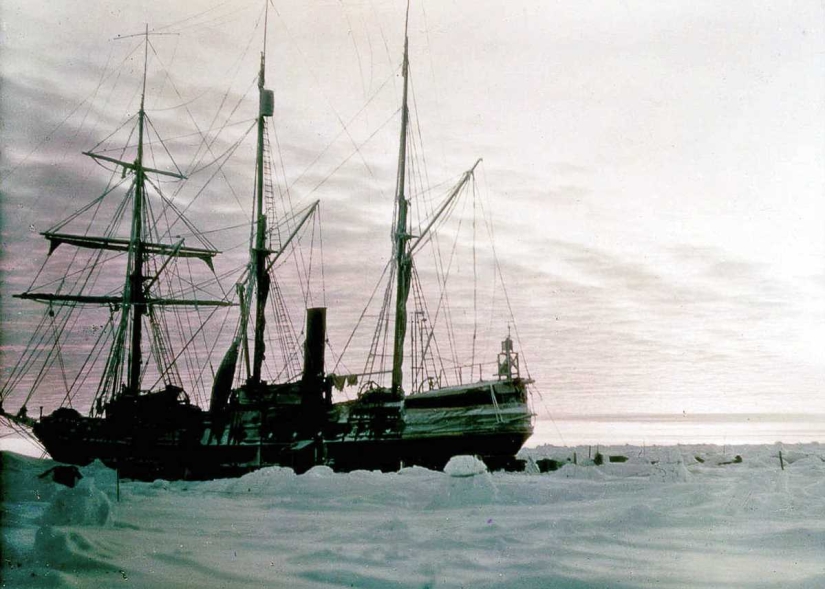
25.
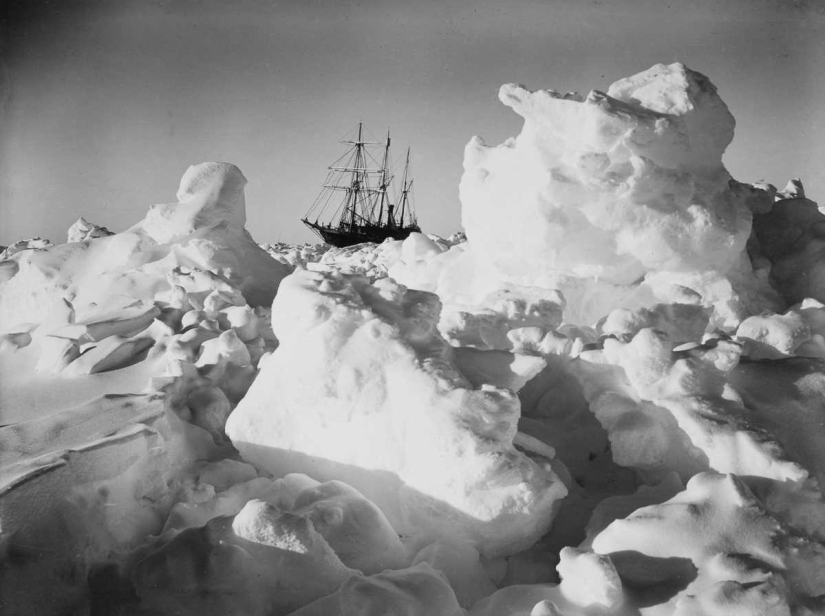
26. The crew plays games and musical instruments to pass the time.
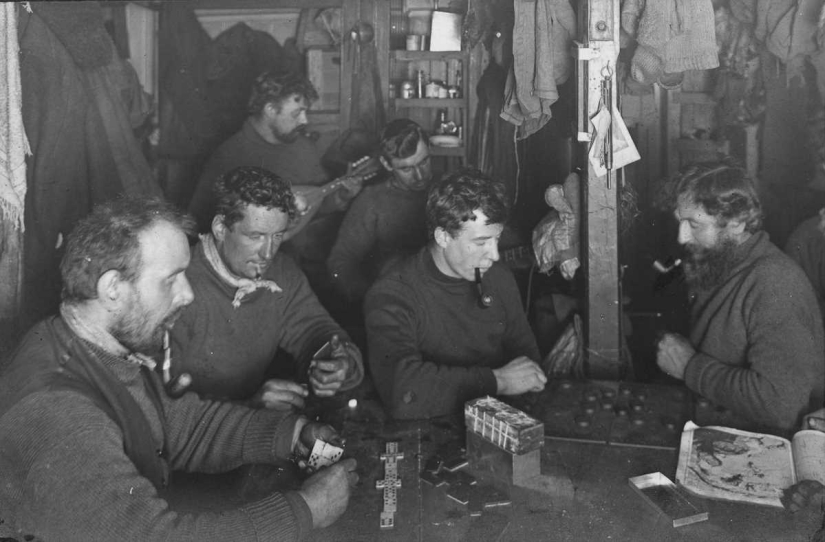
27. The crew plays football on the ice near the Endurance.
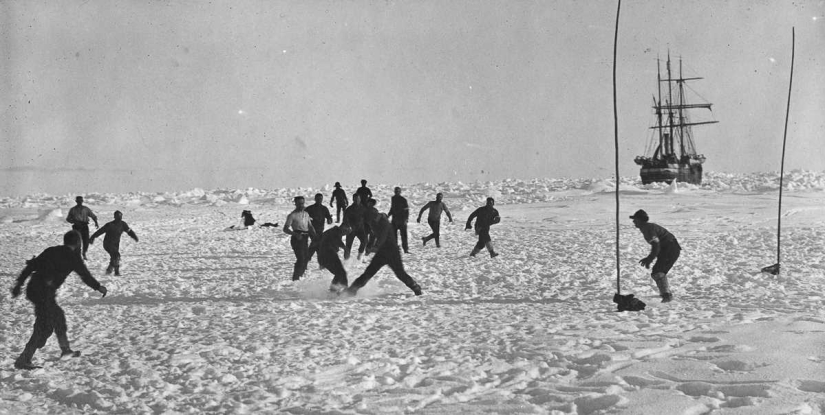
28. "Endurance" at night, illuminated by a lantern.
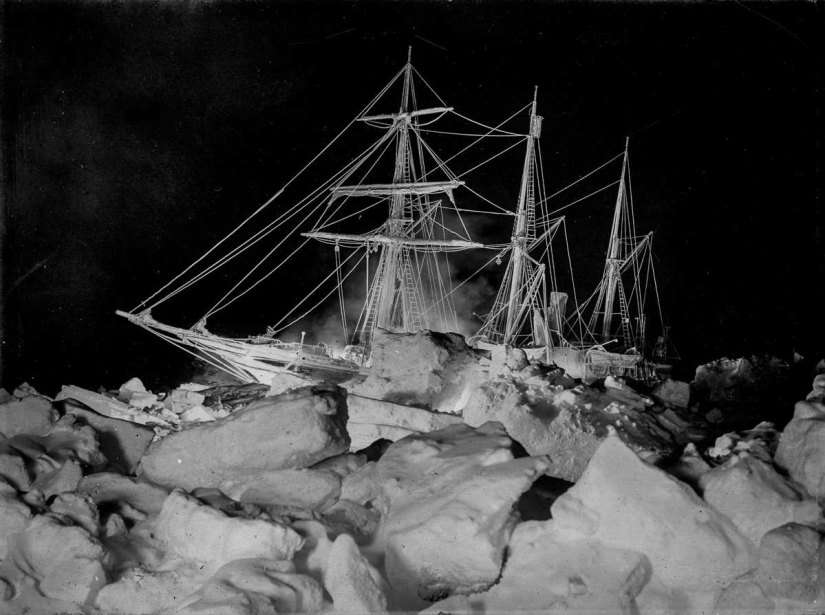
29. On Saturday evening, a toast to "loved ones and wives".
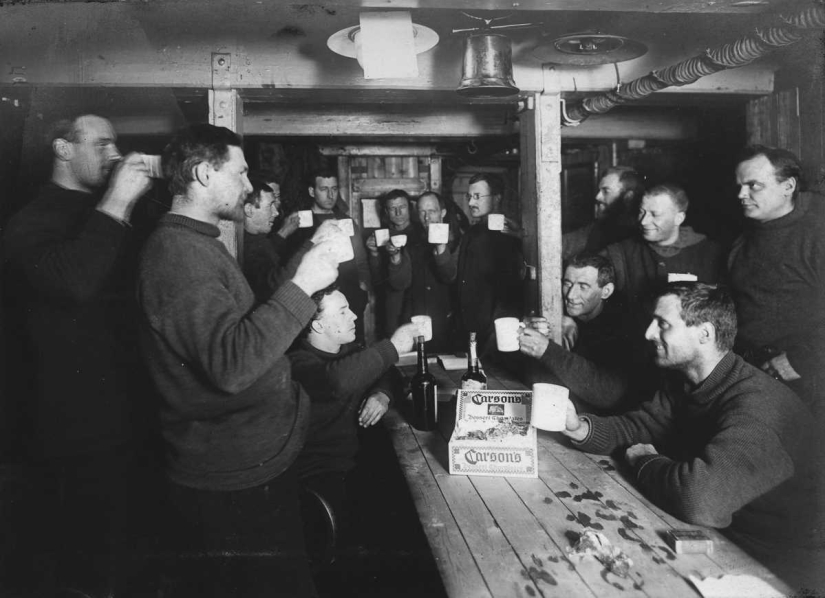
30. Biologist Robert Clark and geologist James Wordie in their cabin.
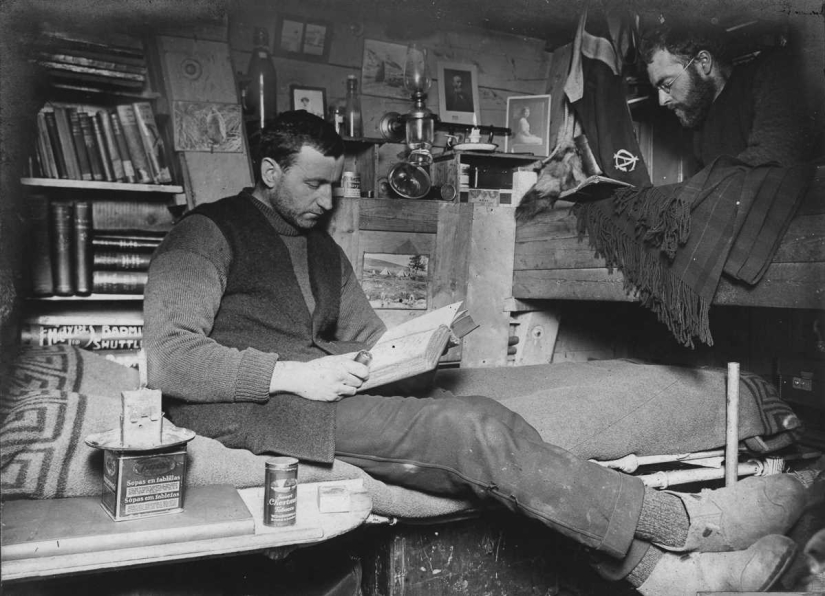
31. The crew drags fresh ice for water.
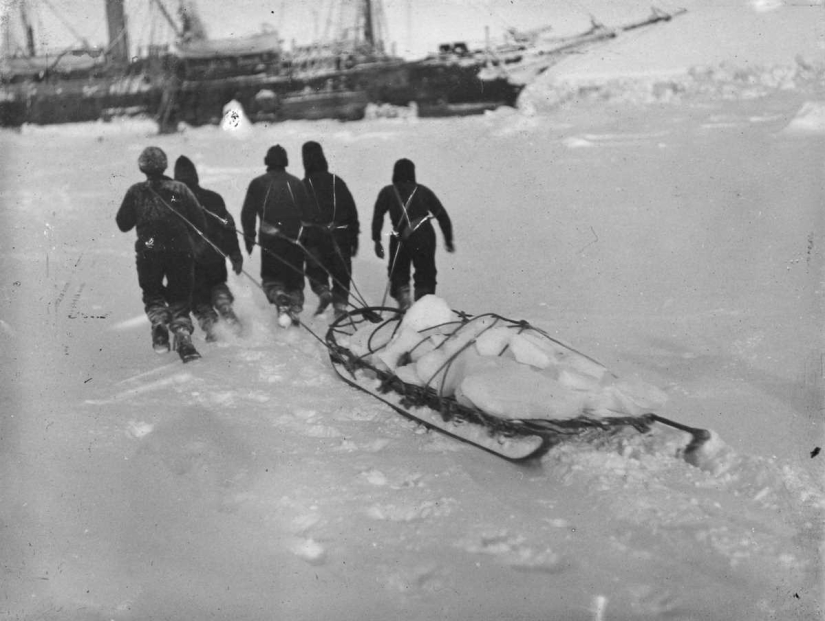
32.
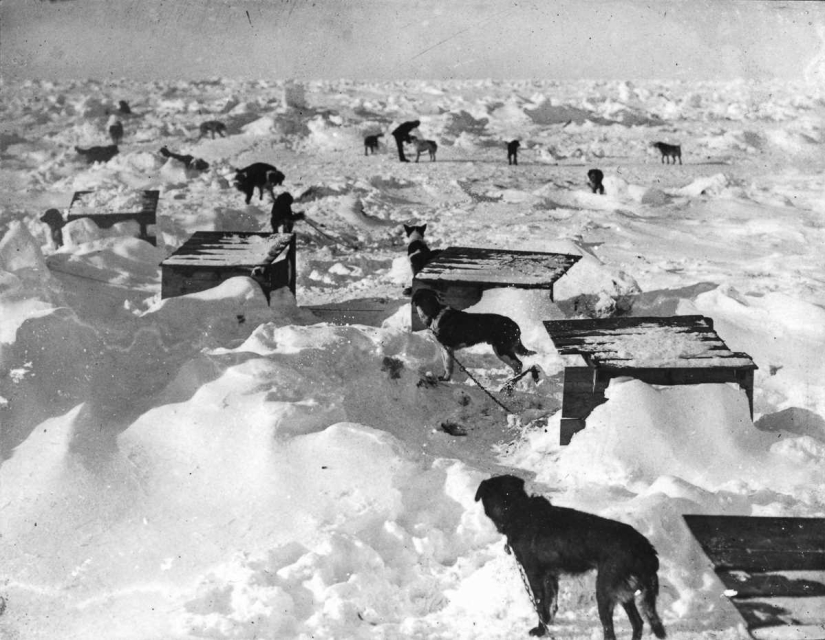
33. Sled dog Old Bob.
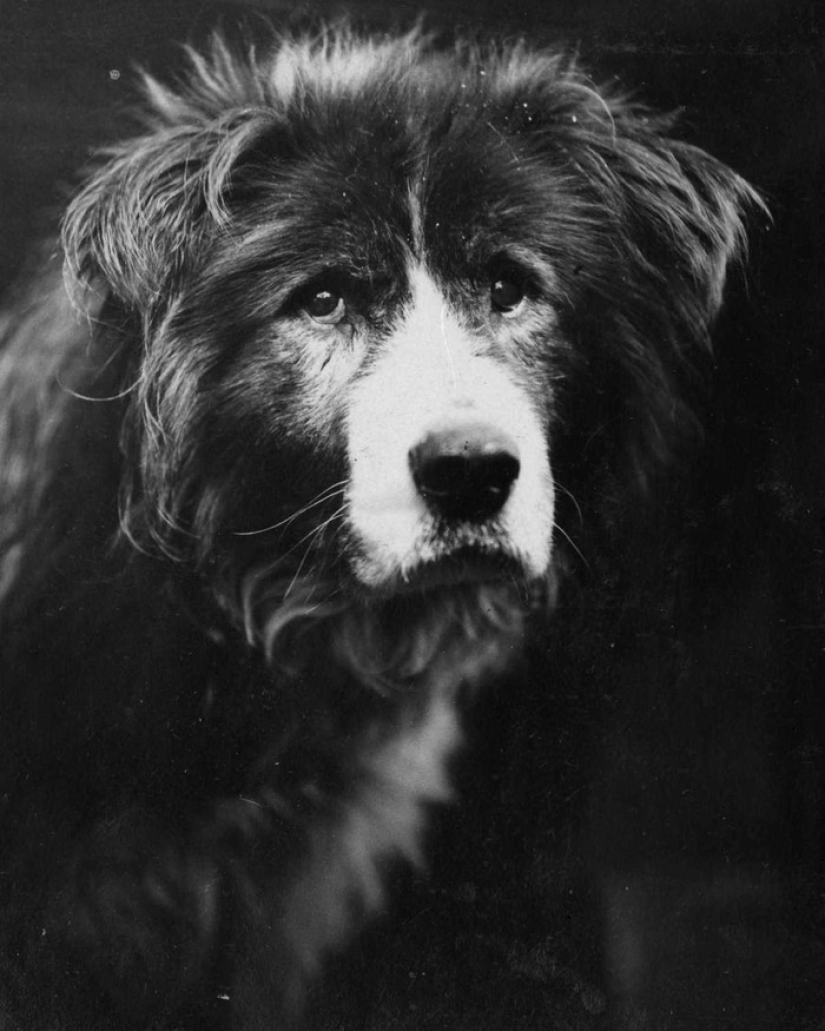
34. Lupoid sled dog.

35.
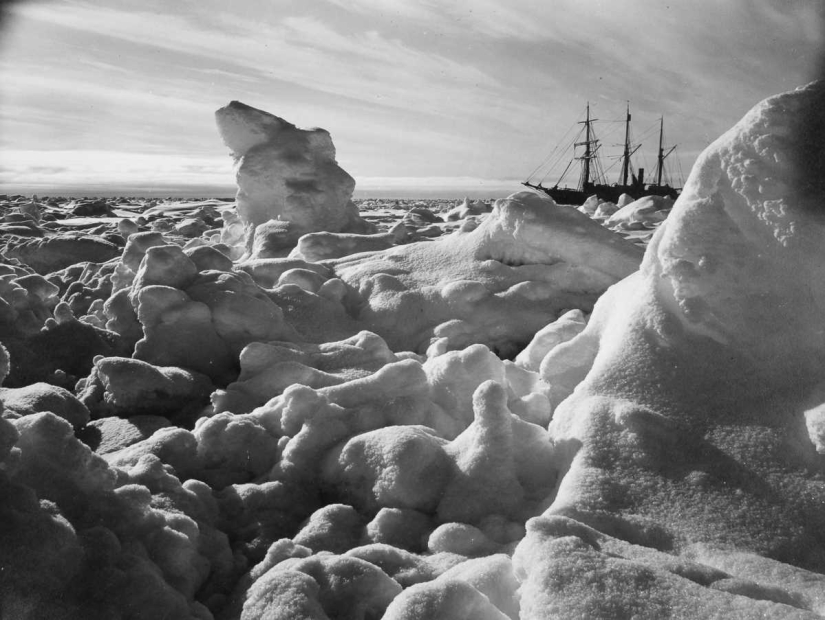
36. "Ice flowers" formed on the ice near the "Endurance".
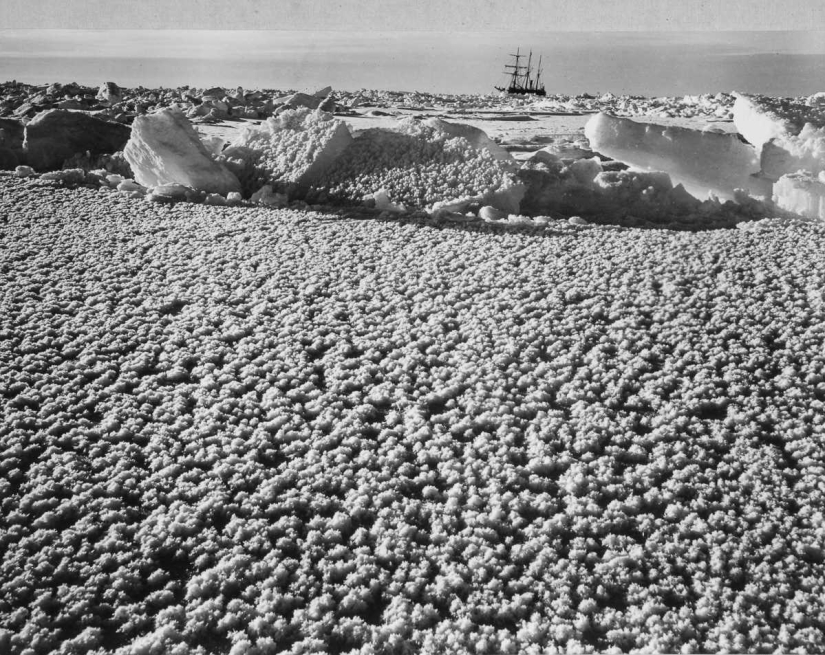
37. James Wordie, Alfred Cheetham and Alexander McLean are mopping the floors at the Ritz on board the Endurance.
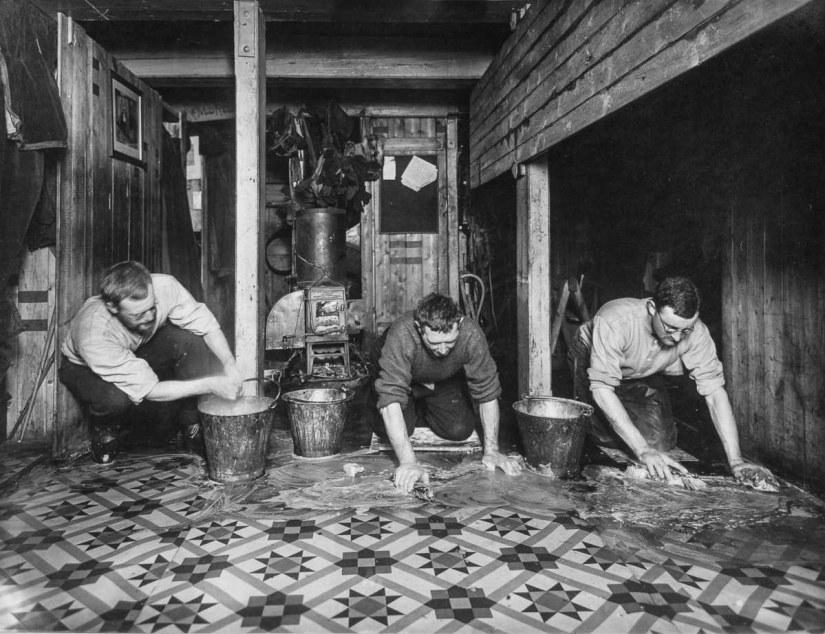
38. Artist George Marston.
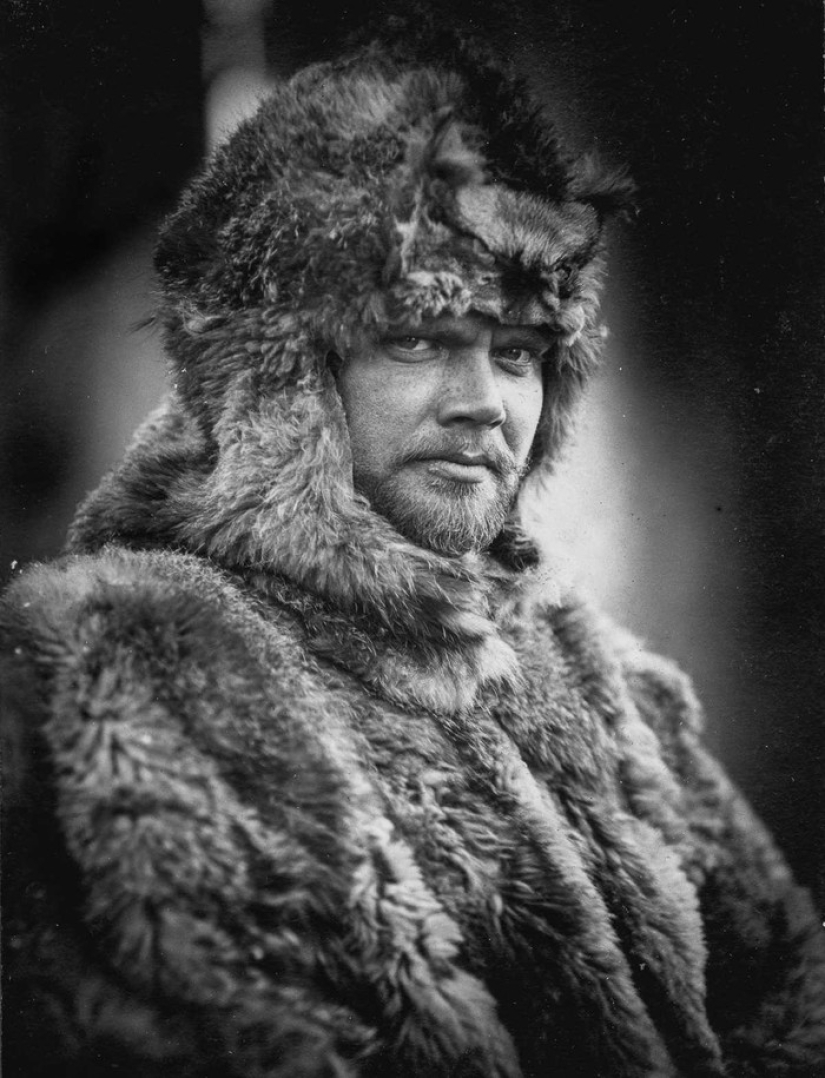
39. Meanwhile, the ship continued to drift along with the ice floes around it. On October 27, 1915, the ship was squeezed to the limit and Shackleton gave the order to leave the Endurance. Due to the limited capacity of the sled by volume and weight, he also ordered the killing of four of the weakest sled dogs, puppies and carpenter Harry McNish's cat.
Photographer Hurley managed to save his photographic plates from the ship, but he had to leave only 120 of the best of them, and break the remaining 400. He also destroyed his bulky cameras, saving only the Kodak Vest Pocket and a few rolls of film.
After a brief attempt at a hike, the crew built a camp on the ice, continuing to extract supplies and lifeboats from the Endurance, until finally, on November 21, the ship completely sank. After the failed second campaign, a "Patience Camp" was founded, in which the team lived for more than three months.
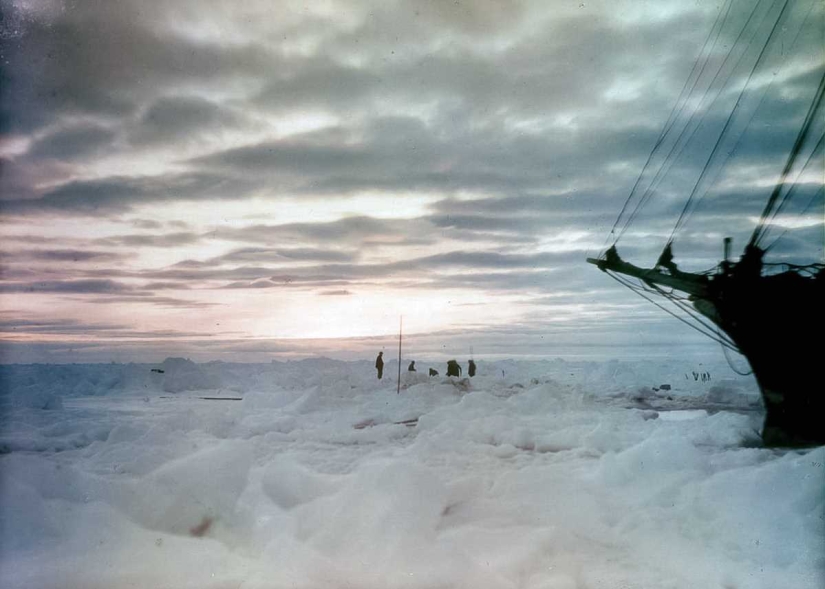
40. The roll of the Endurance, compressed by moving ice floes.
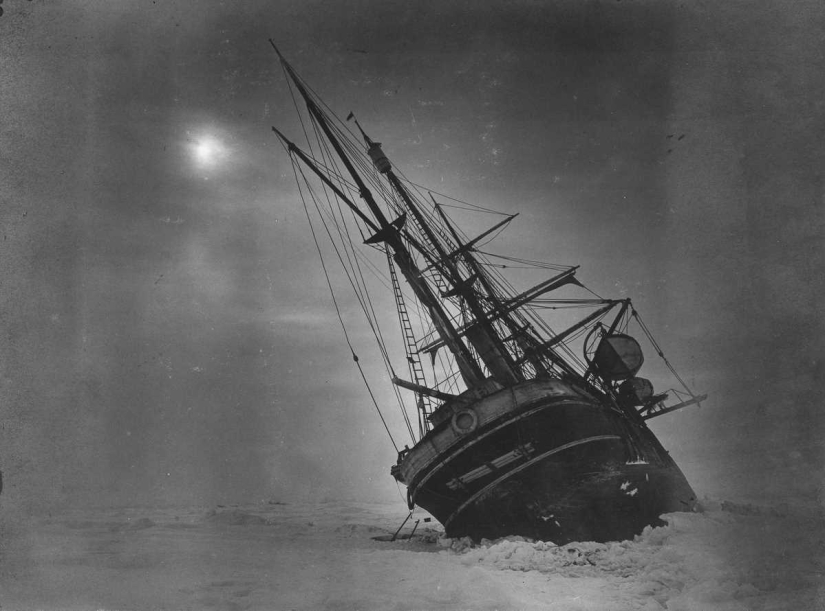
41.
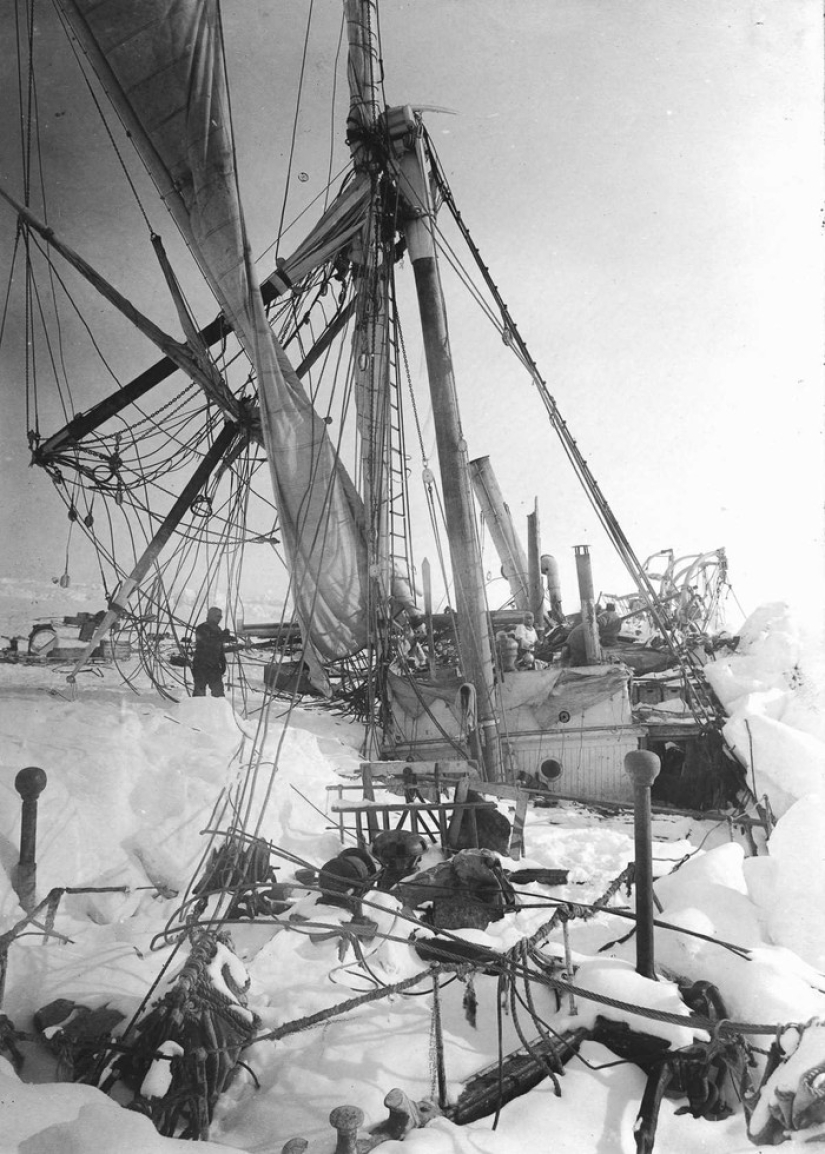
42.
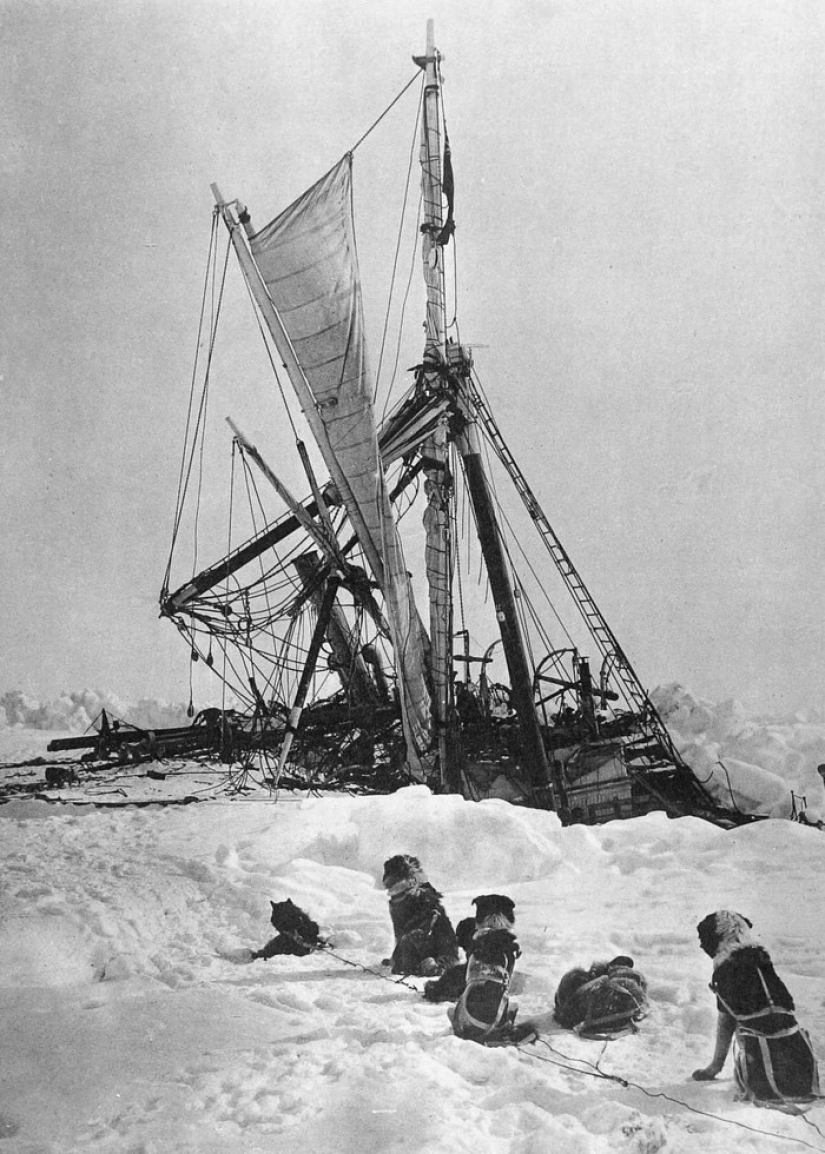
43. Frank Wild, deputy head of the expedition, contemplates the sunken Endurance.
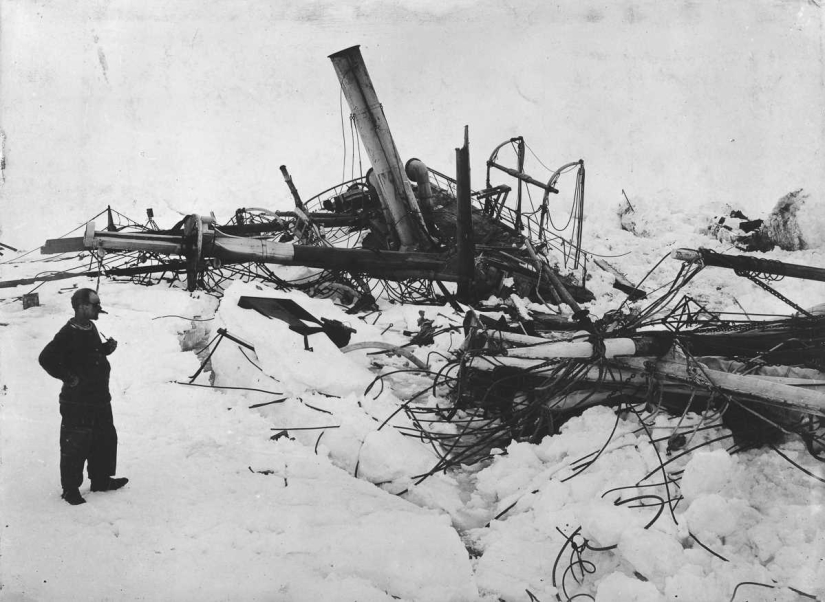
44. The team's dogs are looking for an exit to the ground among the ice.
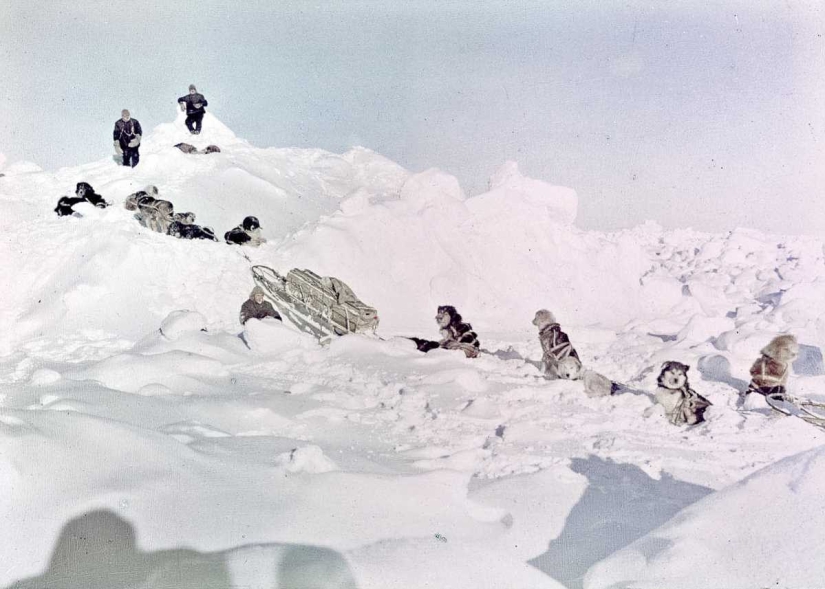
45. Crew members drag one of the lifeboats across the ice after the loss of the Endurance.
Food stocks were melting before our eyes. The rest of the dogs were eaten, but nevertheless 28 people continued to drift. Although the land was visible in the distance, it remained inaccessible due to the accumulation of ice.
On April 8, 1916, the ice floe on which they lived began to split. The crew urgently boarded three lifeboats and began to move through a treacherous maze among the ice in the direction of what they considered an outpost of whaling.
About a week later they landed on the rocky cliff of Elephant Island, inhabited only by penguins and seals. It was their first experience of the earth in 497 days, but the journey did not end there.
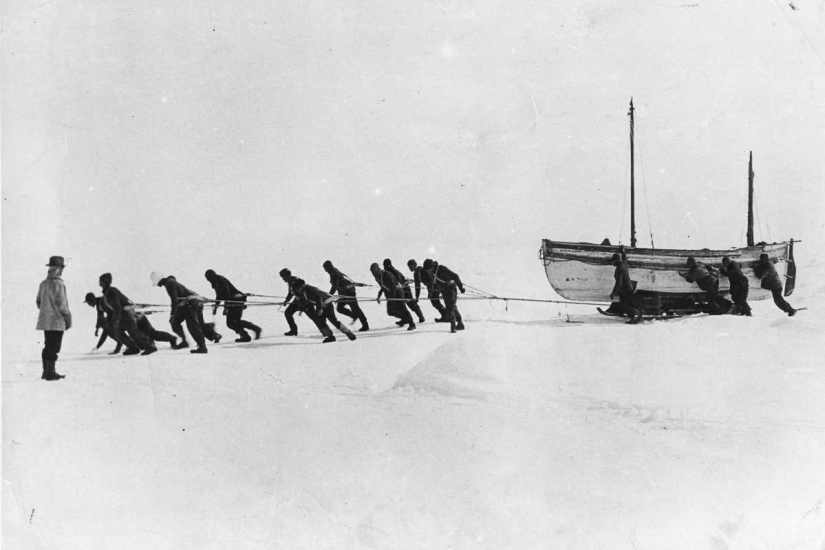
46. The beach on Elephant Island, where the expedition set up its camp.
The nearest really achievable settlement was the whaling base on the island of South Georgia, the distance to which was 920 miles. Having prepared the lifeboat "James Caird" for a long transition, on April 24, 1916, Shackleton, along with five crew members, set off on an expedition. He knew that if they didn't reach their goal in a month, their fate would be sealed.
The rest of the crew remained on Elephant Island, building an improvised shelter from the two remaining boats.
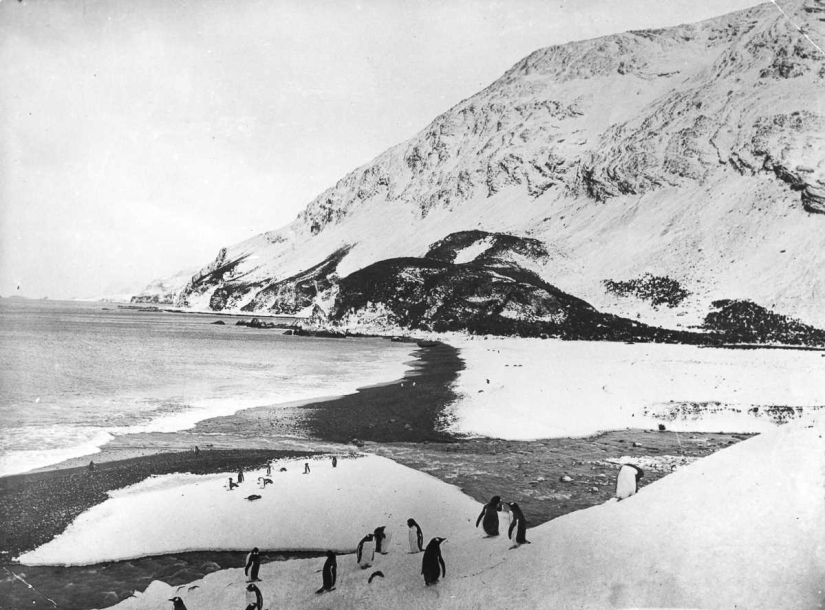
47. April 24, 1916. The James Caird departs from Elephant to reach the island of South Georgia.
In 14 days of grueling passage, the crew of the James Caird survived hurricane-force winds, monstrous waves and exhausting freezing spray. The small boat, completely covered with ice, constantly threatened to capsize.
Finally, they reached the southern coast of the island of South Georgia. The men were completely exhausted, and the boat almost sank.
There was one last obstacle: human settlements were located on the north side of the island. In one final rush, Shackleton and two other people made a 36-hour nonstop crossing, managing to cross the mountainous and unexplored terrain of the island.
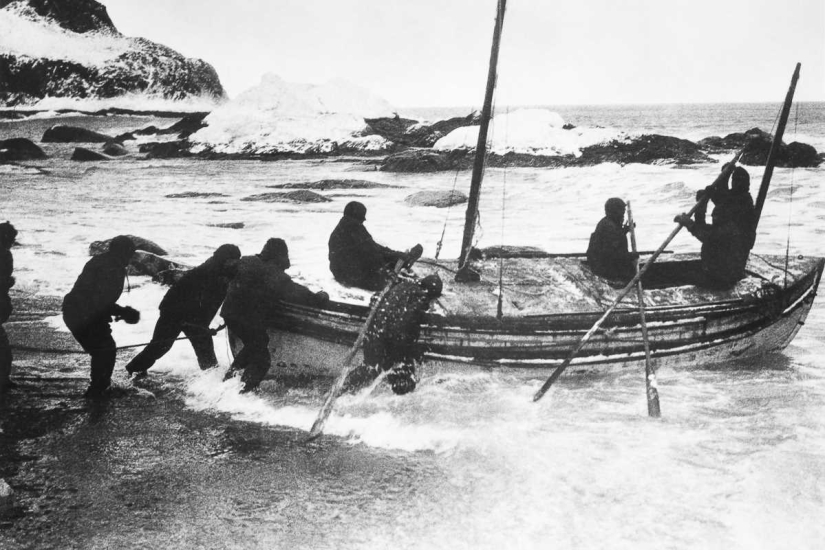
48. The expedition says goodbye to the crew of the James Caird, who went to the island of South Georgia in search of salvation.
On May 20, they finally reached civilization. It took them another three months to return to the ice-encircled Elephant Island, and on August 30, 1916, the entire Endurance crew was completely evacuated.
Keywords: Antarctica | Survival | Ice | People
Post News ArticleRecent articles

An unusual creative collaboration has emerged in New York City: model Zero-Gi, bondage master SamJay, and photographer known as The ...

In 1970 in the valley Isdale in Norway passers-by found the burnt body of a woman. What at first looked like an accident, start to ...
Related articles

Has anyone tried adding flowers to ice? We don't. But, apparently, in vain. So any drink immediately becomes more interesting, even ...

Many do not like winter. Especially when the main holiday of the New year passed. However, it is undeniable that the winter is a ...

Scalping scenes are often shown in old Westerns, and they are almost always accompanied by disturbing music and dramatic pauses. In ...

No wonder they say that a kind word and cat pleasantly. Let it it will not show, but dogs happily respond to praise the master and ...